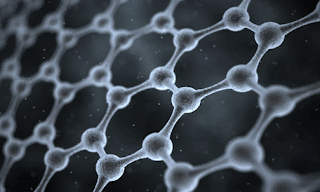Week 3: Robotics and Art
The use of robotics, especially in the assembly line, has
greatly progressed our modern world. Combined with art and aesthetics, robotics
has become more than just a behind the scenes factory essential. As an example,
humanoid robotics have become more than just science fiction. The tech company Honda,
has created a robot designed to act like a butler but has human features.
As robotics
are making their way into the public’s eye, the more need there is for
aesthetically pleasing robots. However, art and robotics isn’t tied to just it’s
appearance. The way assembly line robotics are created can be considered art as
well. In The Science Channel’s “How It’s Made”, an episode showcased how a
robotic arm carefully and precisely cuts out the chassis of a sports car and
cuts it in such a way that only a programmed robot could consistently recreate.
Without the use of this robotic manufacturing, the creation of beautiful sports
cars would not be possible.
As both Benjamin
and Davis point out, sometimes the ability to recreate something multiple times
verbatim makes that piece of art become less personal. However, I disagree
because I see the ability of someone having a piece of art, be it a book,
music, or a painting, as being personal. As Eric Bollens points out, the
invention of the Gutenberg Press (a form of robotic engineering) allowed for
thousands of people to convert to Christianity because they were able to have
an “individual connection” with the Bible and it’s Christian teachings. Prior
to the press, people had to travel and hear someone else’s interpretations of
the Bible.
Benjamin, Walter. The Work of Art in the Age of Mechanical Reproduction. London: Penguin, 2008. Print.
Http://www.youtube.com/channel/UClFkPYzoBuJAnP6LWgSrTVw. "Discovery Channel - How Its Made Dream Cars: Series 3 (2015) - The Porsche 918 Spyder." YouTube. YouTube, 17 Jan. 2016. Web. 18 Apr. 2016.
"Proctor Honda." ASIMO by Honda: The World's Most Advanced Humanoid Robot near Tallahassee, Monticello, FL. N.p., n.d. Web. 18 Apr. 2016.
"SXSW 2015: Robots, Algorithms Infiltrate The News Business, Selecting Stories And Writing Them." International Business Times. N.p., 16 Mar. 2015. Web. 18 Apr. 2016.
Vesna,Victoria. “Lecutre Part 2.” Math + Art. 12 Oct. 2012. Lecture.
Benjamin, Walter. The Work of Art in the Age of Mechanical Reproduction. London: Penguin, 2008. Print.
Http://www.youtube.com/channel/UClFkPYzoBuJAnP6LWgSrTVw. "Discovery Channel - How Its Made Dream Cars: Series 3 (2015) - The Porsche 918 Spyder." YouTube. YouTube, 17 Jan. 2016. Web. 18 Apr. 2016.
"Proctor Honda." ASIMO by Honda: The World's Most Advanced Humanoid Robot near Tallahassee, Monticello, FL. N.p., n.d. Web. 18 Apr. 2016.
"SXSW 2015: Robots, Algorithms Infiltrate The News Business, Selecting Stories And Writing Them." International Business Times. N.p., 16 Mar. 2015. Web. 18 Apr. 2016.
Vesna,Victoria. “Lecutre Part 2.” Math + Art. 12 Oct. 2012. Lecture.




I liked your comments about using robots to build exotic cars because I agree that the degree of precision used to produce the car is what makes it a work of art. If a car was not made symmetrically or had some small imperfections on the chassis, it's doubtful that it could still be regard as a work of art. Although these exotic sports cars are not all one-of-a-kind, they are generally made in relatively small quantities which increases their uniqueness among the rest of the cars on the road. Greater quantities produced would also increase its exposure to the a wider audience compared to only one single model.
ReplyDeleteThats interesting that the robotic butler has humanized traits. I only formed information around fiction robots, I like how you researched and found that. I also like how you disagreed with a piece of work and talked about why. The car reference was great and very appealing. It solidified your argument about why you disagreed and related it to the bigger picture. Great job
ReplyDeleteWell done, Sean. I thought the reference to the Science Channels "How It's Made" is super relevant and I liked how you incorporated this into your post! Your connection between excotic cars and robotics was intriguing because these foreign cars are often symmetrical which is appealing to the eye, art and science working together yet again!
ReplyDelete